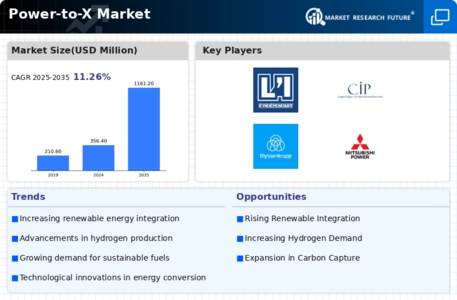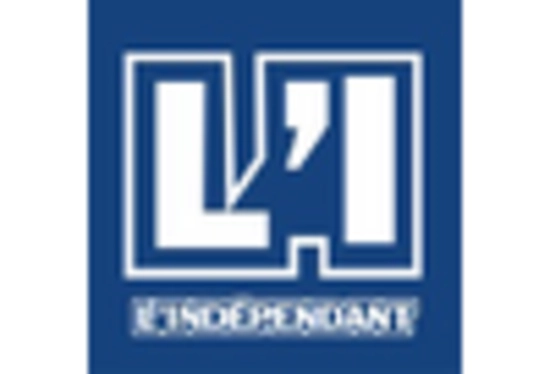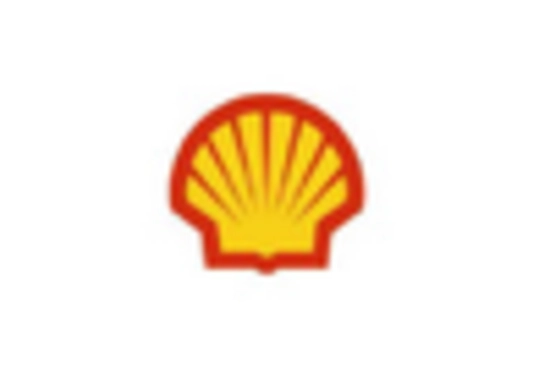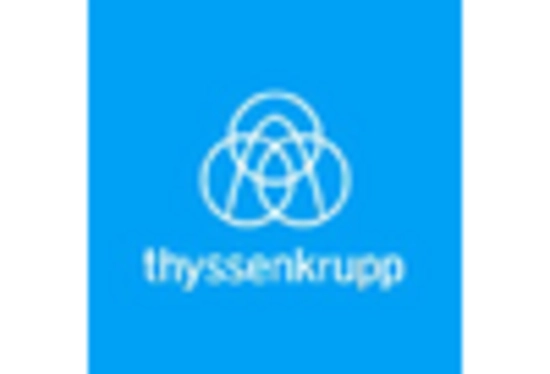Collaboration Across Industries
Collaboration across various industries is emerging as a crucial driver for the Power-to-X Market. Partnerships between energy producers, technology developers, and automotive manufacturers are becoming increasingly common as stakeholders seek to leverage each other's expertise. For instance, collaborations aimed at integrating hydrogen fuel into transportation systems are gaining traction, with several automotive companies investing in hydrogen fuel cell technology. This synergy is likely to enhance the overall efficiency and effectiveness of Power-to-X solutions, fostering a more integrated energy ecosystem. As these collaborations expand, they may lead to innovative applications and business models that further stimulate growth in the Power-to-X Market.
Technological Innovations in Power-to-X
The Power-to-X Market is experiencing a surge in technological innovations, particularly in electrolysis and carbon capture technologies. These advancements are enhancing the efficiency and cost-effectiveness of converting renewable energy into hydrogen and other synthetic fuels. For instance, the efficiency of proton exchange membrane electrolysis has improved significantly, with some systems achieving over 80 percent efficiency. This progress is likely to drive investment and interest in the Power-to-X Market, as companies seek to leverage these technologies for sustainable energy solutions. Furthermore, the integration of artificial intelligence in optimizing production processes may further streamline operations, potentially leading to reduced costs and increased scalability.
Growing Demand for Renewable Energy Solutions
The increasing demand for renewable energy solutions is a pivotal driver for the Power-to-X Market. As nations strive to reduce greenhouse gas emissions, the transition to renewable energy sources is becoming imperative. The International Energy Agency projects that renewable energy will account for nearly 80 percent of the global electricity supply by 2030. This shift is creating a robust market for Power-to-X technologies, which can convert excess renewable energy into hydrogen and other fuels. The ability to store and transport energy in various forms is likely to enhance energy security and reliability, further propelling the growth of the Power-to-X Market.
Regulatory Frameworks and Supportive Policies
The Power-to-X Market is significantly influenced by regulatory frameworks and supportive policies established by various governments. Many countries are implementing ambitious climate targets, which include substantial investments in renewable energy and hydrogen production. For example, the European Union has set a target to produce 10 million tons of renewable hydrogen by 2030, which is expected to catalyze growth in the Power-to-X Market. Additionally, financial incentives such as grants and tax credits for renewable energy projects are becoming more prevalent, encouraging private sector participation. This supportive environment is likely to foster innovation and accelerate the deployment of Power-to-X technologies.
Investment Trends in Clean Energy Technologies
Investment trends in clean energy technologies are shaping the landscape of the Power-to-X Market. Venture capital and private equity firms are increasingly directing funds towards innovative Power-to-X projects, recognizing the potential for high returns in a rapidly evolving market. In 2025, investments in hydrogen production technologies alone are projected to exceed 30 billion dollars, reflecting a growing confidence in the viability of these solutions. This influx of capital is likely to accelerate research and development efforts, leading to breakthroughs that could enhance the competitiveness of the Power-to-X Market. As more stakeholders enter the market, competition may drive down costs and improve technology accessibility.

















Leave a Comment